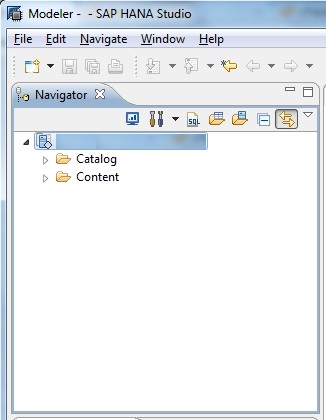SAP HANA Studio
The SAP HANA studio is a collection of applications for the SAP HANA appliance software. It enables technical users to Manage the SAP HANA database, to Create and Manage User Authorizations, and to Create new or Modify existing Models of data in the SAP HANA database. It is a client tool, which can be used to access local or remote SAP HANA databases.
Supported Platforms
The SAP HANA studio runs on the Eclipse platform 3.6. We can use the SAP HANA studio on the following platforms:
- Microsoft Windows x32 and x64 versions of: Windows XP, Windows Vista, Windows 7
- SUSE Linux Enterprise Server SLES 11: x86 64-bit version
System Requirements
Java JRE 1.6 or 1.7 must be installed to run the SAP HANA studio. The Java runtime must be specified in the PATH variable. Make sure to choose the correct Java variant for installation of SAP HANA studio:
- For a 32-bit installation, choose a 32-bit Java variant.
- For a 64-bit installation, choose a 64-bit Java variant.
Installation Paths
If we do not specify an Installation Path during installation, the following default values apply:
- Microsoft Windows 32-bit -> C:\Program Files\sap\hdbstudio
- Microsoft Windows 64-bit -> C:\Program Files\sap\hdbstudio
- Microsoft Windows 32-bit (x86) -> C:\Program Files (x86)\sap\hdbstudio
- Linux x86, 64-bit -> /usr/sap/hdbstudio
Open the SAP HANA studio from the Start menu:
Start > All Programs > SAP HANA > SAP HANA Studio
The SAP HANA studio starts.
Perspectives
The SAP HANA studio provides an environment for Administration, Modeling and Data Provisioning. There are several predefined User Interface layouts addressing several applications types called Perspectives.
The Administration Console is used to Administrate and Monitor the SAP HANA instances. The Modeler view is used to define Information Models.
Adding System
In order to connect to a SAP HANA instance we need to know the Server where the instance is running and Instance Number. Also we need a Username & Password combination to connect to the instance.
The left side Navigator space will show what are all the HANA instances available in SAP HANA Studio. As this is new system the first step we have to do is add the system.
- So right click in the Navigator space and click on Add System

- Enter the SAP HANA instance details, i.e. the Hostname & Instance Number and click Next.

- Enter the database username & password to connect to the SAP HANA database. Click on Next and then Finish.

- The SAP HANA system now appears in the Navigator.

Catalog and Content
After the system has been integrated on the left side of the SAP HANA Studio we will find the Navigator View. There are two sub-nodes, Catalog and Content. The Catalog represents SAP HANA’s data dictionary, i. e. all data structures, tables, and data which can be used. The physical tables and views will be placed in the Navigator tree under the Default Catalog node. This node contains a list of <b>Schema</b>s which a used to categorize tables according to user defined groupings.

The node Content represents the design-time repository which holds all information data models created with the Modeler. Physically these models are stored in database tables which are also visible under Catalog. The Information Model nodes navigate to Attribute Views, Analytic Views and Calculation Views. The Information Models are organized in Packages. The Contents node just provides a different view on the same physical data.
One model can incorporate tables from multiple Schemas. The Schema do not limit the modeling capabilities. The created Column Views are always located in schema _SYS_BIC, their metadata in schema _SYS_BI.

